Parenting with children involves nurturing bonds, fostering joy, and embracing mindfulness for a happy, connected family life. Parenting with children requires a commitment to understanding and supporting each child’s unique needs.

Table of Contents
Parenting with children is a rewarding journey that can be made even more fulfilling by focusing on intentional practices that enhance family relationships.
Parenting with Children: 7 Inspiring Secrets for Joyful
When parenting with children, it is essential to incorporate playfulness, communication, and emotional support to create a nurturing environment.
Effective parenting with children also involves setting realistic expectations that align with each child’s developmental stage.
Parenting with children means fostering open communication, allowing for growth and understanding between parents and children.
Parenting can be a beautiful yet challenging journey, one that requires patience, love, and adaptability. This guide aims to reveal seven inspiring secrets to cultivate joy, connection, and harmony while navigating the dynamic relationship between parents and children. By embracing these practices, families can build stronger bonds, foster open communication, and create a nurturing environment where everyone thrives.
By practicing active listening, parents can enhance their parenting with children strategy, leading to more meaningful interactions.
The path to joyful parenting begins with understanding and mindfulness. From balancing discipline and empathy to finding moments of shared laughter, this introduction sets the stage for the transformative insights that follow.
Foster Open Communication
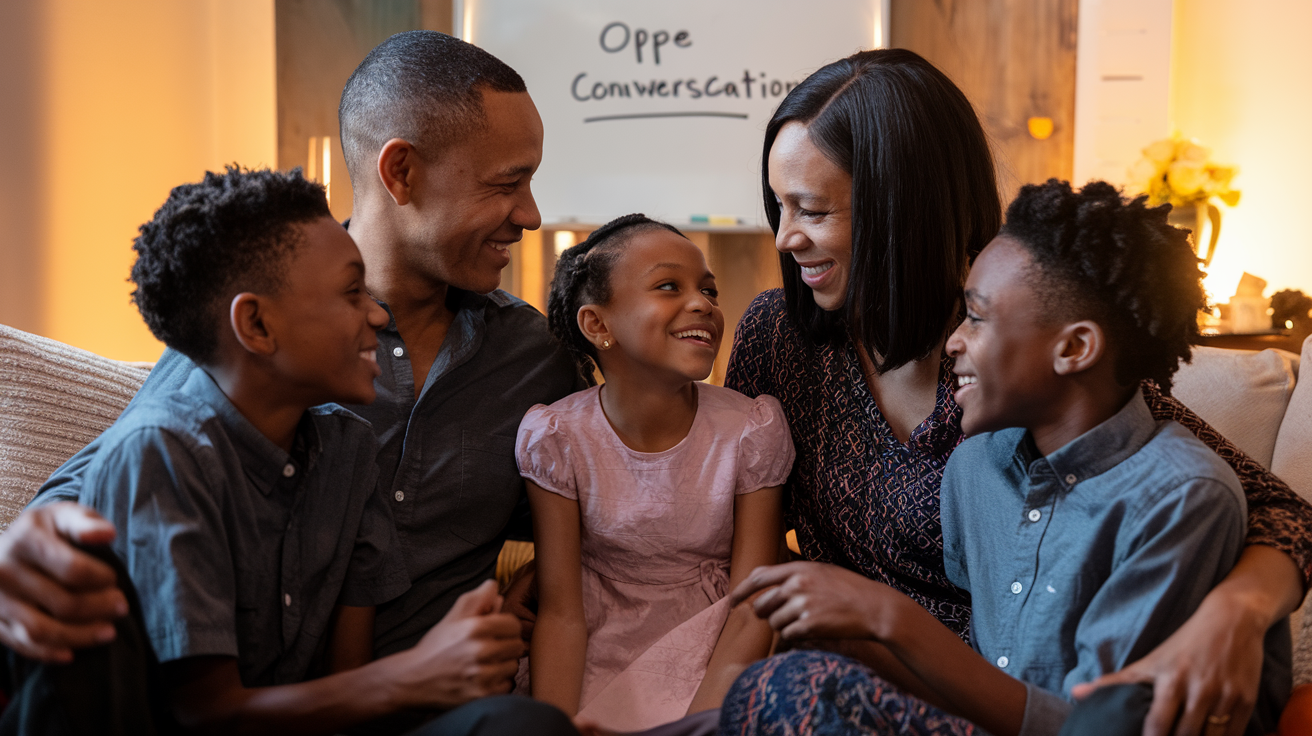
A. Create safe spaces for dialogue
Creating safe spaces for dialogue is crucial in fostering open communication between parents and children. These spaces should be free from judgment and distractions, allowing children to express themselves freely. To establish such an environment:
- Choose a quiet, comfortable area in your home
- Minimize digital distractions by putting away devices
- Set aside dedicated time for conversations
- Maintain a calm and accepting demeanor
By consistently providing these safe spaces, parents demonstrate that they value their children’s thoughts and feelings, encouraging more frequent and meaningful interactions.
Part of parenting with children is ensuring that emotional expression is encouraged and validated.
B. Practice active listening
Active listening is a fundamental skill that greatly enhances parent-child communication. When parents actively listen, they show their children that their perspectives are valued and important. Here are key components of active listening:
- Maintain eye contact
- Use verbal and non-verbal affirmations (nodding, saying “I see”)
- Focus fully on the child without interruptions
- Avoid judgment or immediate problem-solving
To further improve active listening skills, parents can employ reflective listening techniques. This involves rephrasing the child’s statements to ensure understanding and encourage further expression of emotions.
| Active Listening Do’s | Active Listening Don’ts |
|---|---|
| Maintain eye contact | Interrupt or judge |
| Use affirming gestures | Offer unsolicited advice |
| Stay at eye level | Multitask during talks |
| Rephrase for clarity | Dismiss feelings |
C. Encourage expression of emotions
Encouraging children to express their emotions is vital for their emotional development and strengthens the parent-child bond. Here are strategies to promote emotional expression:
- Use “noticing” statements to provide specific praise
- Help children articulate their feelings with age-appropriate language
- Validate emotions without necessarily agreeing with actions
- Model appropriate emotional expression
It’s important to remember that children may communicate through various non-verbal cues, including facial expressions, body language, and tone of voice. Parents should be attentive to these signals and respond with empathy and understanding.
When conflicts arise, view them as opportunities for growth. Encourage open dialogue about feelings and use these moments to teach conflict resolution skills. By modeling positive conflict resolution strategies, parents equip their children with valuable life skills.
Remember to avoid lecturing, as this can harm the parent-child relationship and lead to communication breakdowns. Instead, listen actively to your child’s opinions, even when they differ from your own, as this demonstrates respect for their individuality.
By implementing these strategies for fostering open communication, parents create a foundation of trust and understanding with their children. This strong communication base is essential for joyful parenting and helps children develop confidence and self-esteem.
With this solid foundation of open communication established, we can now explore how to “Embrace Playfulness” in our parenting approach. This next section will delve into how incorporating fun and lighthearted interactions can further strengthen the parent-child bond and create a more joyful family environment.
Embrace Playfulness
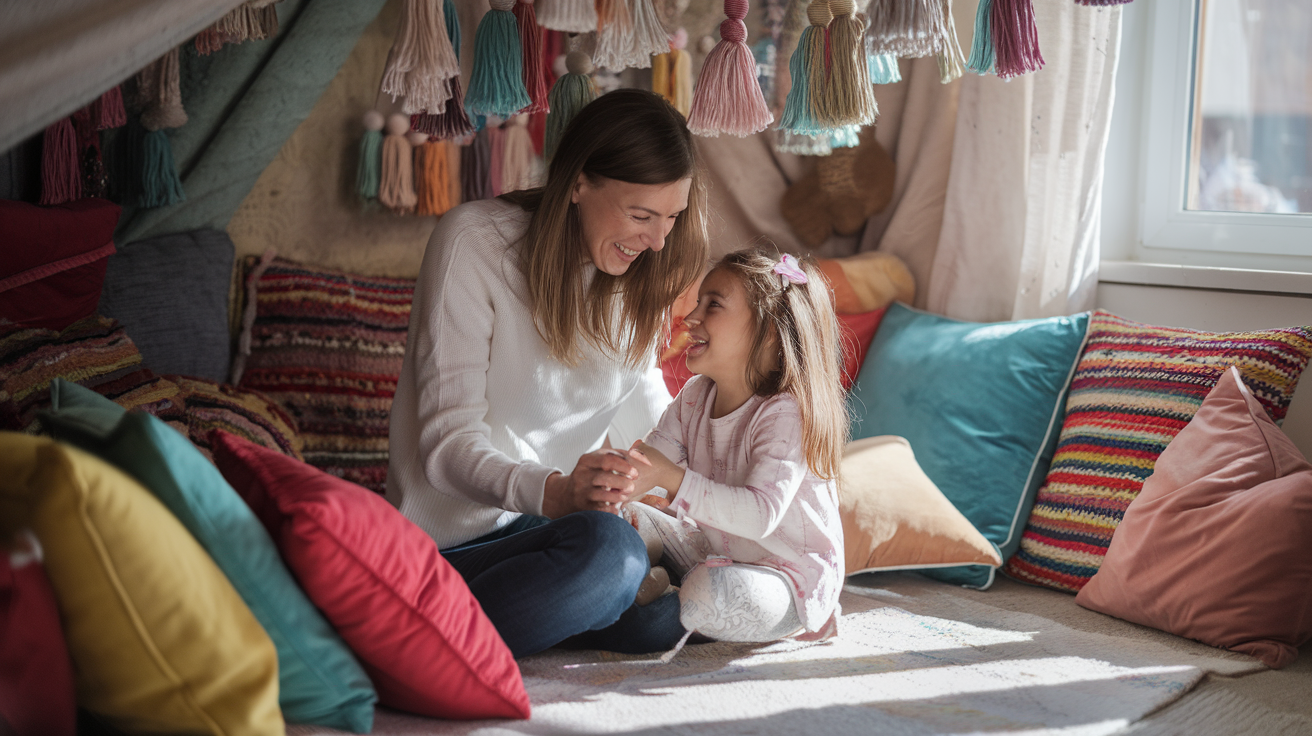
Now that we’ve explored the importance of fostering open communication, let’s dive into another crucial aspect of joyful parenting: embracing playfulness. This approach not only strengthens the bond between parents and children but also creates a positive and nurturing environment for growth and development.
Understanding that conflicts can arise during parenting with children provides opportunities for growth and learning.
A. Schedule regular family fun time
Creating a strong foundation for parenting with children is essential for their self-esteem and overall development.
Parenting with children also means embracing playfulness as a central element of family life.
Regular family fun time is vital for parenting with children, creating lasting memories and joyful experiences.
Making time for play is essential in today’s busy world. By scheduling regular family fun time, you create opportunities for meaningful interactions and joyful experiences. Here are some ways to incorporate playfulness into your family routine:
- Set aside specific times each week for family games or activities
- Plan monthly outings or adventures that everyone can look forward to
- Create a “fun jar” filled with ideas for spontaneous play sessions
Remember, these moments don’t need to be elaborate or expensive. The key is to prioritize spending quality time together, fostering a sense of connection and happiness within the family unit.
B. Participate in your child’s games
Actively engaging in your child’s play is a powerful way to strengthen your relationship and support their development. When you participate in their games, you:
- Enhance their problem-solving skills
- Improve their physical coordination
- Support their emotional management
- Strengthen emotional bonds
Consider the concept of “serve-and-return” interactions during play. This mutual engagement helps children feel secure and understood while also benefiting your emotional well-being as a parent.
| Benefits of Participating in Child’s Play |
|---|
| Fosters essential skill development |
| Strengthens emotional bonds |
| Enhances mutual understanding |
| Promotes happier, healthier relationships |
C. Use humor to diffuse tense situations
Participating in play is a significant part of parenting with children and fosters deeper connections.
Humor can be a valuable tool in parenting, especially when dealing with challenging moments. By introducing playfulness into tense situations, you can:
- Reduce stress for both you and your child
- Create a more positive atmosphere
- Teach your child healthy coping mechanisms
For example, when faced with a tantrum or disagreement, try using a silly voice or making a funny face to lighten the mood. This approach can help shift the energy and make it easier to address the underlying issue.
D. Create silly family traditions
Establishing unique and playful family traditions can contribute to a joyful parenting experience. These traditions:
- Create lasting memories
- Strengthen family bonds
- Provide a sense of belonging and identity
Some ideas for silly family traditions include:
Establishing silly family traditions can enhance the joy of parenting with children and create lasting bonds.
- Having a monthly “backwards day” where you eat dessert first and wear clothes inside out
- Creating funny nicknames for each family member
- Inventing a secret family handshake or dance
Using humor to diffuse tense situations is another effective strategy in parenting with children.
These traditions don’t need to be complex or time-consuming. The key is to infuse them with playfulness and creativity, making them special to your family.
By embracing playfulness in your parenting approach, you’re not only creating a more joyful environment but also supporting your child’s overall development. Play serves as an effective stress reliever for both children and adults, triggering the release of endorphins and promoting well-being. Research indicates that playtime can mitigate the adverse effects of prolonged stress on children, bolstering their resilience through supportive adult relationships.
Moreover, play provides a safe space for children to process complex emotions and navigate challenging experiences. Through imaginative play, they can reenact scenarios and better comprehend their feelings, fostering emotional growth and confidence.
As we move forward to explore the next section on cultivating mindfulness, remember that playfulness and mindfulness can work hand in hand. By staying present and fully engaged during playtime, you’ll deepen your connection with your child and create even more meaningful experiences together.
Cultivate Mindfulness

Now that we’ve explored the importance of embracing playfulness in parenting, let’s delve into another crucial aspect of joyful parenting: cultivating mindfulness. This practice can significantly enhance the parent-child relationship and create a more harmonious family environment.
Practice gratitude together
Incorporating gratitude into your family’s daily routine can foster a positive atmosphere and strengthen bonds. Here are some ways to practice gratitude with your children:
- Create a family gratitude journal
- Share three things you’re thankful for during dinner
- Write thank-you notes together for kind gestures
- Encourage children to express appreciation for each other
By consistently practicing gratitude, families can develop a more optimistic outlook and improve overall well-being. This mindful approach helps children recognize the good in their lives, promoting emotional resilience and happiness.
Teach deep breathing techniques
Deep breathing is a powerful tool for managing emotions and reducing stress. Introduce these child-friendly breathing exercises to promote mindfulness:
| Technique | Description | Benefits |
|---|---|---|
| Balloon Breath | Imagine inflating a balloon in your belly as you inhale | Encourages proper diaphragmatic breathing |
| Starfish Breathing | Trace the outline of your hand, breathing in on the up-strokes and out on the down-strokes | Combines visual and tactile cues for focus |
| Buddy Breathing | Place a stuffed animal on your child’s belly and watch it rise and fall with each breath | Makes breathing practice fun and engaging |
These techniques not only help children regulate their emotions but also provide a foundation for mindfulness practice. Encourage your family to use these exercises during calm moments and in times of stress.
Engage in nature walks
Connecting with nature is an excellent way to cultivate mindfulness and awareness. Family nature walks offer numerous benefits:
By embracing playfulness in parenting with children, families foster emotional resilience and joy.
- Enhance environmental awareness
- Promote physical activity
- Provide opportunities for sensory exploration
- Foster a sense of calm and well-being
During these walks, encourage your children to:
Parenting with children also involves cultivating mindfulness and being present in each moment.
- Notice and identify different sounds in nature
- Observe changes in their surroundings
- Feel various textures of leaves, bark, or stones
- Practice mindful walking by focusing on each step
To further engage children in mindful nature experiences, consider creating a “nature treasure hunt” or a “sensory scavenger hunt” where they look for specific items or sensations during the walk.
Practicing gratitude together enhances the experience of parenting with children by fostering positivity.
By incorporating these mindfulness practices into your family routine, you’ll be better equipped to navigate the challenges of parenting with patience and compassion. Remember that mindfulness is a skill that develops over time, so be gentle with yourself and your children as you explore these techniques together.
As we move forward, it’s important to recognize that while cultivating mindfulness can greatly enhance your parenting journey, it’s equally crucial to set realistic expectations. In the next section, we’ll explore how to balance aspirations with practical realities, ensuring a more joyful and less stressful parenting experience.
Set Realistic Expectations
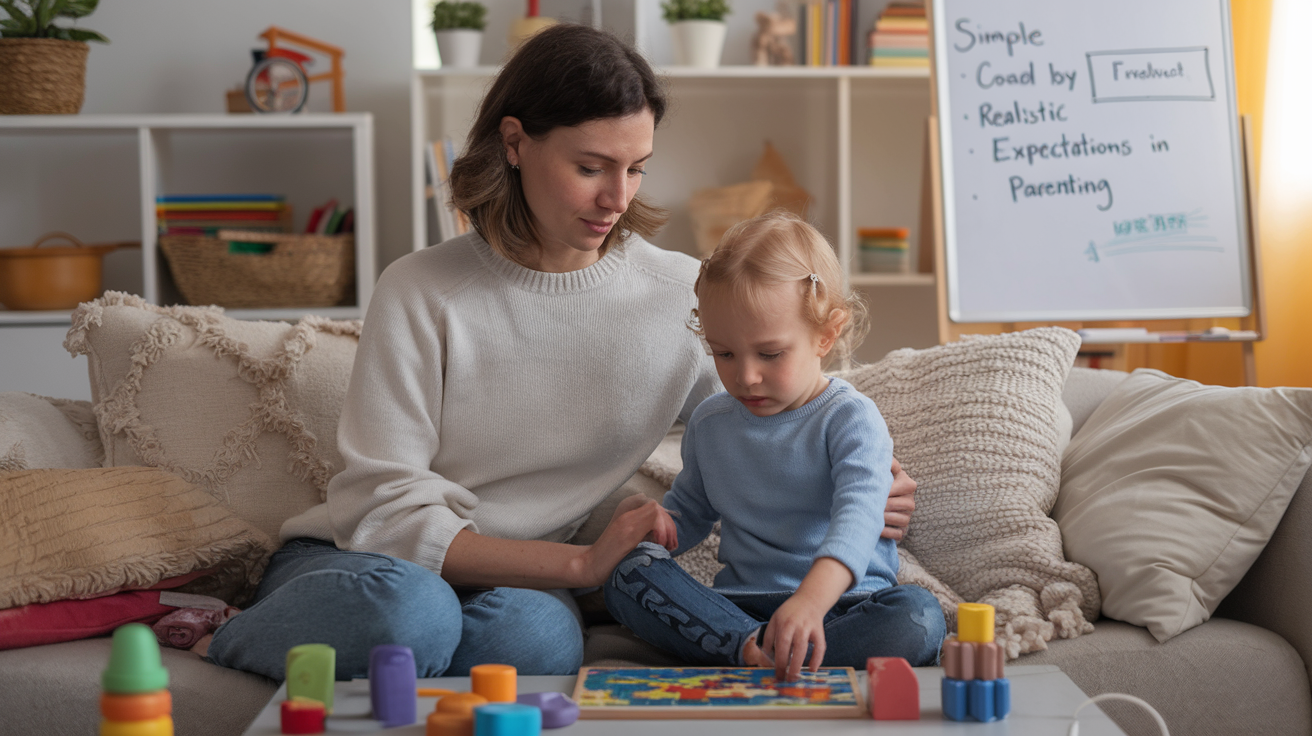
Now that we’ve explored the importance of cultivating mindfulness in parenting, let’s delve into another crucial aspect of joyful parenting: setting realistic expectations. This approach not only fosters a positive environment but also strengthens the parent-child bond.
A. Adjust goals based on child’s age
Setting age-appropriate expectations is fundamental to gentle parenting. By recognizing each child’s unique developmental stage, parents can create an environment that nurtures growth and reduces stress for both themselves and their children. Here’s why adjusting goals based on your child’s age is crucial:
- Promotes self-confidence
- Enhances emotional growth
- Encourages independence
- Fosters resilience
To implement age-appropriate expectations effectively, consider the following strategies:
| Strategy | Description |
|---|---|
| Observe and listen | Pay attention to your child’s needs and capabilities |
| Evaluate personal biases | Reflect on your own expectations and adjust them accordingly |
| Cultivate open communication | Encourage dialogue to understand your child’s perspective |
| Seek expert guidance | Consult developmental milestones to set realistic goals |
B. Celebrate small victories
Engaging in nature walks is a wonderful way to practice mindfulness during parenting with children.
Acknowledging and celebrating small achievements is a powerful tool in joyful parenting. This approach not only boosts your child’s self-esteem but also reinforces positive behavior. Here’s how to effectively celebrate small victories:
- Offer specific praise for efforts and accomplishments
- Create a “victory board” to visually track progress
- Use positive reinforcement to encourage continued growth
- Share achievements with family members to build a supportive network
Remember, what may seem insignificant to adults can be a significant milestone for children. By recognizing these moments, you’re fostering a sense of accomplishment and motivation in your child.
C. Focus on progress, not perfection
Shifting the focus from perfection to progress is essential in creating a nurturing environment for your child. This mindset allows for learning through mistakes and promotes emotional well-being. Here’s how to implement this approach:
- Anticipate mistakes as normal developmental milestones
- Respond constructively to behavioral issues
- Emphasize the learning process rather than the outcome
- Model resilience by sharing your own experiences with overcoming challenges
By focusing on progress, you’re teaching your child valuable life skills such as
- Perseverance
- Problem-solving
- Emotional regulation
- Growth mindset
Remember, setting realistic expectations is not about lowering standards, but rather aligning them with your child’s developmental capabilities. This approach creates a positive atmosphere where children feel supported and encouraged to grow at their own pace.
As we move forward, we’ll explore how to lead by example, which complements the practice of setting realistic expectations. By demonstrating the behaviors and attitudes we wish to see in our children, we create a powerful learning environment that fosters joyful parenting and nurtures happy, confident children.
Lead by Example
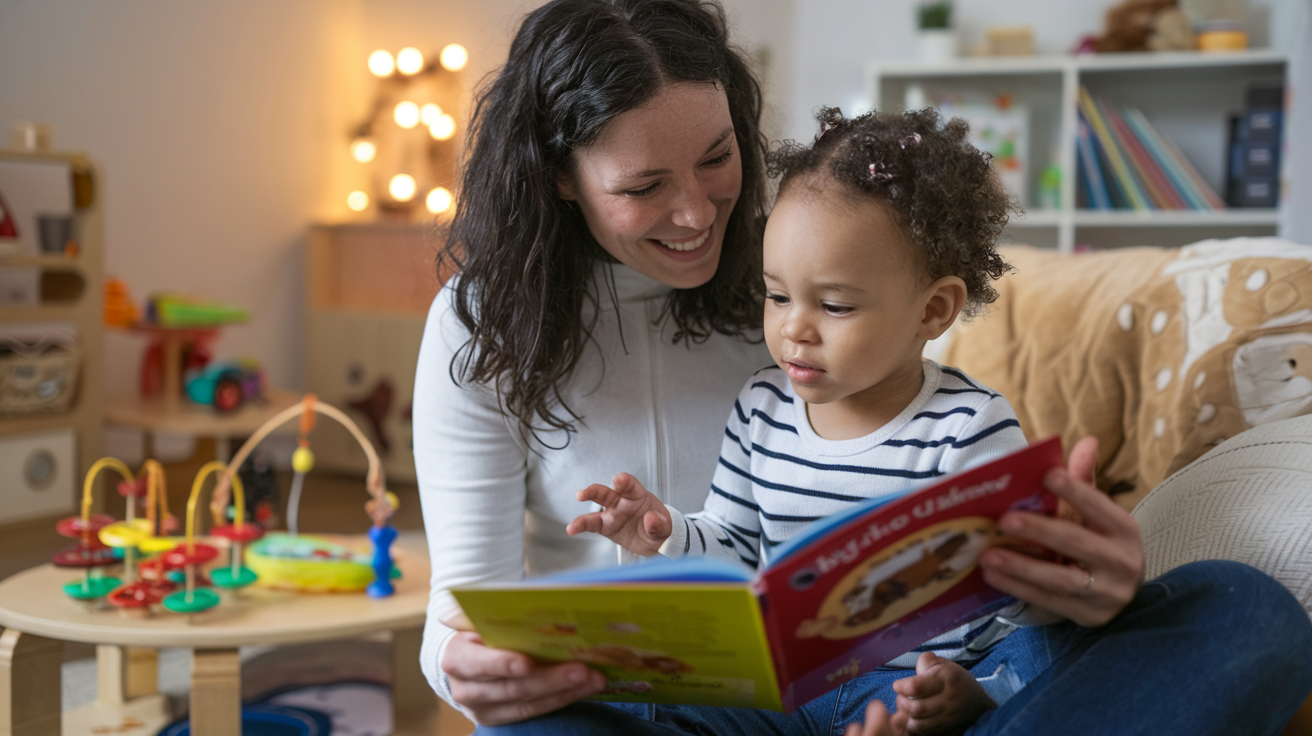
Now that we’ve explored the importance of setting realistic expectations, let’s delve into another crucial aspect of joyful parenting: leading by example. As parents, our actions speak louder than words, and modeling the behaviors we wish to see in our children is one of the most powerful tools at our disposal.
A. Model emotional intelligence
Mindfulness practices are essential for parenting with children and help parents navigate challenges with grace.
Setting realistic expectations creates a supportive framework for parenting with children.
Children are keen observers, constantly learning from the adults around them. By demonstrating emotional intelligence, we can help our little ones develop crucial skills for managing their feelings and relationships. Here are some ways to model emotional intelligence:
- Express your emotions openly and appropriately
- Discuss feelings with your children, using phrases like “I feel…”
- Use the HALT acronym (Hungry, Angry, Lonely, Tired) to check in with your emotions before reacting
- Apologize when you make mistakes, showing that it’s okay to be imperfect
B. Demonstrate problem-solving skills
As parents, we face numerous challenges daily. By approaching these obstacles with a positive attitude and effective problem-solving techniques, we can teach our children valuable life skills. Consider the following strategies:
- Talk through problems out loud, explaining your thought process
- Involve children in collaborative problem-solving activities
- Show resilience when faced with setbacks
- Encourage creative thinking and brainstorming
C. Show self-care practices
Taking care of ourselves is essential for maintaining the energy and patience required for joyful parenting. By prioritizing self-care, we not only improve our own well-being but also teach our children the importance of looking after themselves. Here’s how to model self-care:
- Engage in regular physical activity
- Practice mindfulness or meditation
- Maintain healthy eating habits
- Set aside time for hobbies and relaxation
To better understand the impact of modeling behavior, let’s examine the differences between passive and active modeling:
| Passive Modeling | Active Modeling |
|---|---|
| Children observe parents’ unconscious behaviors | Parents intentionally demonstrate desired behaviors |
| May inadvertently reinforce negative habits | Focuses on positive traits and actions |
| Limited explanation of reasoning behind actions | Includes discussions about the importance of behaviors |
| Children may misinterpret or miss important lessons | Provides clear guidance and understanding |
By consciously practicing active modeling, we can significantly influence our children’s development and decision-making skills.
Remember, as we model these behaviors, it’s crucial to maintain consistency and authenticity. Children are quick to notice discrepancies between what we say and what we do. By aligning our actions with our words, we create a powerful learning environment for our little ones.
As we move forward to discuss establishing consistent routines, it’s important to recognize how leading by example lays the foundation for creating a structured and nurturing home environment. The behaviors we model directly impact our ability to implement and maintain effective family routines, which we’ll explore in the next section.
Establish Consistent Routines
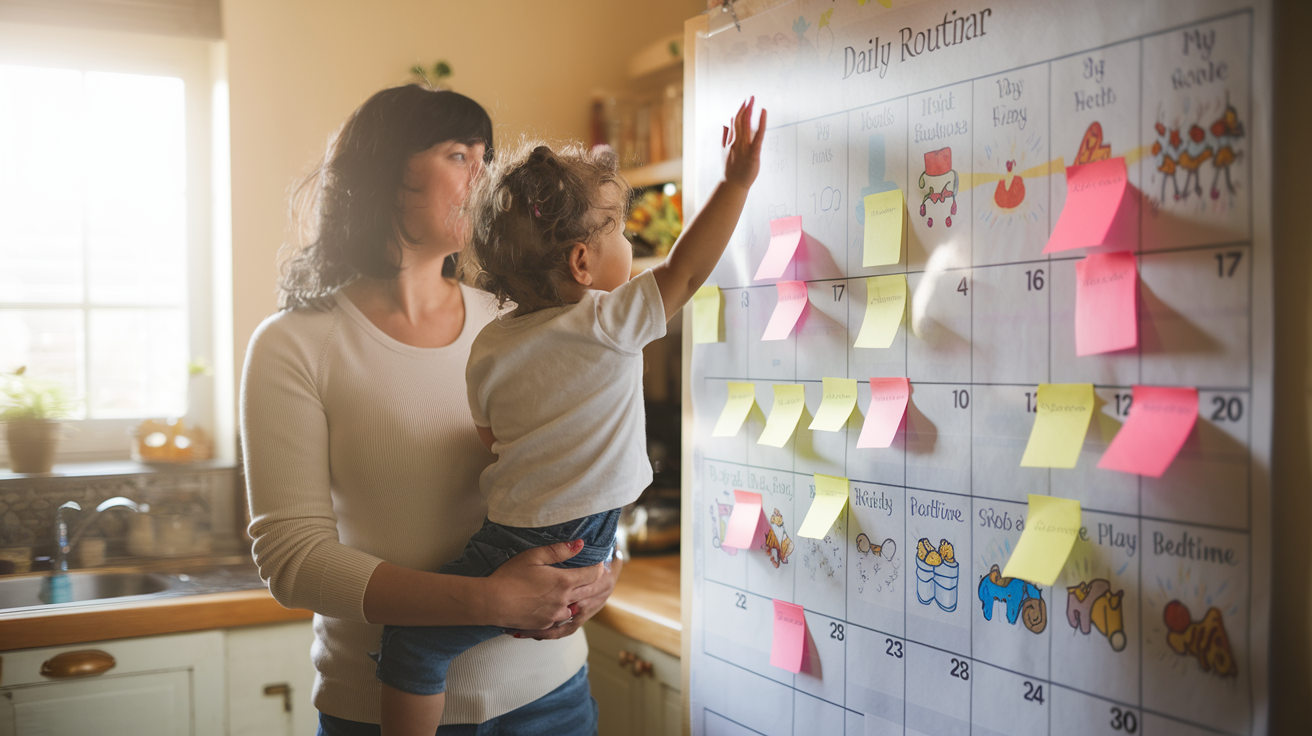
Now that we’ve explored the importance of leading by example, let’s delve into another crucial aspect of joyful parenting: establishing consistent routines. By creating a structured environment, parents can provide their children with a sense of security and stability, fostering a more harmonious family life.
Create predictable daily schedules
Implementing a predictable daily schedule is essential for both parents and children. By maintaining a consistent routine, families can reduce unnecessary stress and anxiety, much like avoiding “unnecessary limbo” as mentioned in the Kroger statement. Here’s a simple table outlining key elements of a daily schedule:
| Time | Activity |
|---|---|
| Morning | Wake-up, breakfast, and school preparation |
| Afternoon | Homework, playtime, and extracurricular activities |
| Evening | Family dinner, relaxation, and bedtime routine |
Creating such a schedule helps children understand what to expect throughout the day, reducing potential conflicts and promoting a sense of security.
Implement bedtime rituals
Establishing a consistent bedtime routine is crucial for children’s well-being and overall family harmony. Just as the coach in our example took a proactive approach to future challenges, parents can use bedtime rituals to prepare their children for a restful night’s sleep. Consider incorporating the following elements into your bedtime ritual:
- Reading a story together
- Gentle stretching or yoga
- Listening to calming music
- Discussing the day’s events
These activities can help children wind down and transition smoothly into sleep, avoiding unnecessary delays and promoting better rest for the entire family.
Maintain family mealtimes.
Regular family meals are an excellent opportunity to foster open communication and strengthen bonds. Like the importance of avoiding “unnecessary specialist visits” in healthcare, maintaining consistent family meal times can prevent unnecessary discord and promote a healthier family dynamic. Consider the following benefits of regular family meals:
- Improved communication
- Better nutrition habits
- Increased sense of belonging
- Opportunities for sharing and problem-solving
By prioritizing family meal times, parents can create a stable environment where children feel heard and valued.
Balance structure with flexibility
While consistency is key, it’s equally important to maintain a balance between structure and flexibility. Just as Network Rail noted that unnecessary delays were avoided despite unexpected circumstances, parents should be prepared to adapt their routines when needed. This flexibility can help prevent unnecessary stress and anxiety in the face of unforeseen events.
Here are some tips for balancing structure with flexibility:
- Allow for occasional deviations from the routine for special events or circumstances
- Be open to adjusting schedules as children grow and their needs change
- Incorporate “free time” into the daily routine to allow for spontaneity and creativity
- Regularly reassess and update routines to ensure they continue to meet the family’s needs
By striking this balance, parents can maintain the benefits of consistent routines while avoiding the pitfalls of rigidity.
Establishing consistent routines is a powerful tool in creating a joyful and harmonious family life. By implementing predictable daily schedules, bedtime rituals, and regular family meal times, while also balancing structure with flexibility, parents can provide their children with a stable and nurturing environment. This approach not only reduces unnecessary stress and conflict but also sets the stage for stronger family bonds and individual growth.
Leading by example is a powerful strategy in parenting with children, influencing their behavior and values.
With these consistent routines in place, we can now turn our attention to the next crucial aspect of joyful parenting: nurturing individual connections. By building on the foundation of structure and predictability, parents can create meaningful one-on-one experiences with each child, further strengthening the family unit.
Modeling emotional intelligence is crucial for successful parenting with children.
Nurture Individual Connections

Now that we’ve established the importance of consistent routines, let’s explore how nurturing individual connections with each child can further enhance joyful parenting.
A. Spend one-on-one time with each child
Dedicating quality time to each child individually is crucial for building strong parent-child relationships. This focused attention allows parents to:
- Understand their child’s unique personality and needs
- Foster open communication and trust
- Create lasting memories and strengthen emotional bonds
To make the most of one-on-one time, consider the following:
| Activity Ideas | Benefits |
|---|---|
| Regular “dates” | Builds anticipation and special connection |
| Shared hobbies | Encourages common interests and skill development |
| Bedtime chats | Provides a safe space for daily reflections |
| Nature walks | Promotes physical activity and environmental awareness |
B. Discover and support unique interests
Each child has their own passions and talents. By actively discovering and nurturing these individual interests, parents can:
- Boost their child’s self-esteem and confidence
- Encourage personal growth and skill development
- Show respect for their child’s autonomy
To effectively support your child’s unique interests:
- Observe their natural inclinations and preferences
- Provide resources and opportunities for exploration
- Celebrate their achievements and progress
- Connect them with mentors or classes in their area of interest
C. Validate each child’s feelings
Acknowledging and validating your child’s emotions is essential for their emotional well-being and development. This practice:
Self-care practices are essential for sustaining energy and patience in parenting with children.
- Helps children feel understood and respected
- Teaches emotional intelligence and self-awareness
- Strengthens the parent-child bond
To validate your child’s feelings effectively:
- Listen actively without judgment
- Reflect back their emotions using phrases like “I hear that you’re feeling…”
- Avoid dismissing or minimizing their experiences
- Help them identify and name their emotions
D. Create personalized traditions
Establishing unique traditions for each child adds a special touch to family life and creates lasting memories. These personalized rituals:
Demonstrating problem-solving skills provides children with a framework for effective decision-making during parenting with children.
- Make each child feel valued and important
- Provide opportunities for one-on-one bonding
- Create a sense of anticipation and joy
Examples of personalized traditions include:
- Annual “adventure days” tailored to each child’s interests
- Special birthday breakfasts featuring their favorite foods
- Yearly photo sessions capturing their growth and personality
- Customized holiday ornaments or keepsakes
By nurturing individual connections with each child, parents can create a more joyful and harmonious family environment. This approach acknowledges the unique qualities of each family member while fostering strong, lasting relationships. Remember that these efforts need not be grand gestures; consistency and genuine interest in your child’s world are key to building meaningful connections.
Establishing consistent routines enhances the experience of parenting with children by providing structure and stability.
Celebrating small victories is an important practice in parenting with children, reinforcing positive behavior.
Maintaining family mealtimes is crucial for open communication during parenting with children.
Balancing structure with flexibility ensures that parenting with children remains responsive to their needs.
Nurturing individual connections is vital for enhancing parenting with children, allowing each child to feel valued.
Spending one-on-one time with each child is essential in parenting with children for fostering deeper relationships.
Discovering and supporting each child’s unique interests is a key aspect of parenting with children.
Validating each child’s feelings enhances emotional understanding during parenting with children.
Creating personalized traditions helps each child feel special in parenting with children.
Share this content:
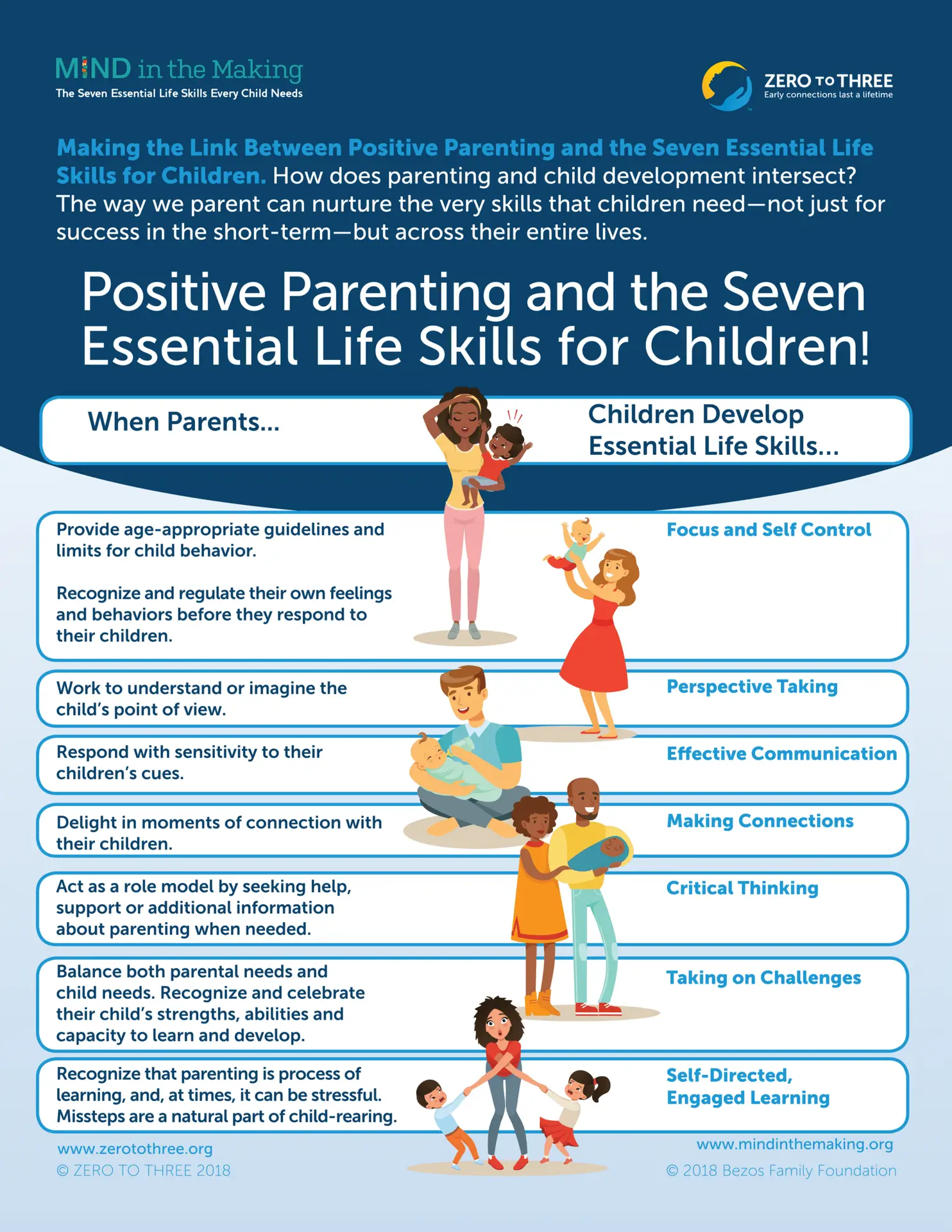
[…] Parenting with Children: 7 Inspiring Secrets for Joyful […]